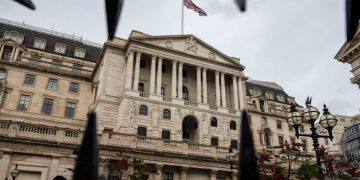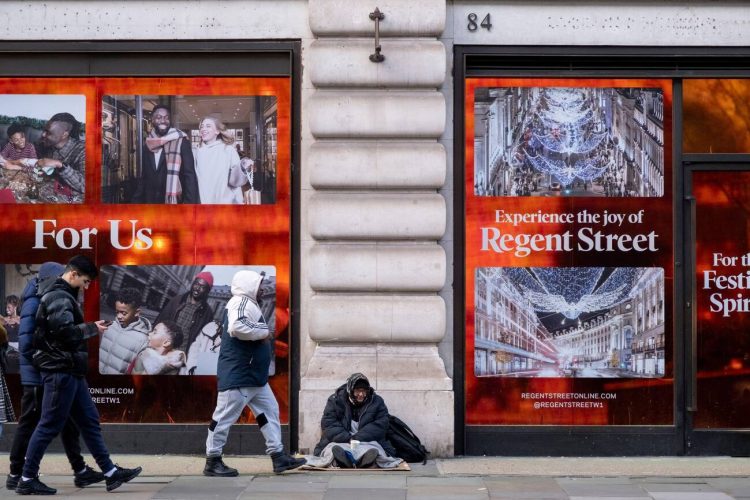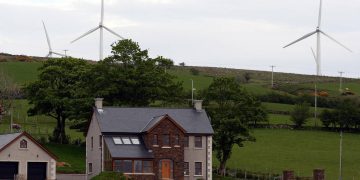People who live in England or Wales can get temporary protection from creditors. This scheme is called ‘Breathing Space’. People can get temporary protection for up to 60 days. However, they still need to make their debt repayments.
If people get this breathing, enforcement action cannot be taken against them. Creditors cannot contact people about debts included in its Breathing Space. Creditors cannot add interest or charges to people’s debt. If people get mental health crisis treatment, protection from creditors will be longer. It will last for the length of your treatment, plus another 30 days. People must not use the ‘Breathing Space’ scheme in the last 12 months unless it was for a mental health crisis. Personal insolvency trends UK are concerning.
Figures and Personal Insolvency Trends UK
After seasonal adjustment, 10,147 individuals entered insolvency in England and Wales in February 2025. This was 4% higher than in January 2025 and 5% lower than in February 2024. In the 12 months ending 28 February 2025, one in 417 adults in England and Wales entered insolvency (at a rate of 24.0 per 10,000 adults). This is higher than the rate of 21.9 per 10,000 adults (one in 457) who entered insolvency in the 12 months ending 29 February 2024. These figures show personal insolvency trends UK.
There were 7,889 breathing space registrations in February 2025. This is similar to February 2024. After seasonal adjustment, 10,147 individuals entered insolvency in England and Wales in February 2025. This was 4% higher than in January 2025 and 5% lower than in February 2024. The change of 4% compared to January 2025 is smaller than the average absolute change of 8% between consecutive months over the past three years.
There were 7,889 breathing spaces registered under the Debt Respite Scheme in February 2025.
This is 2% lower than in February 2024. Of the 7,889 breathing space registrations, 7,775 were Standard registrations, and 114 were Mental Health registrations. Between the start of the scheme in May 2021 and 28 February 2025, Step Change Debt Charity registered 60% of breathing spaces. This is an obvious rise in the personal insolvency trends UK.
After seasonal adjustment, there were 600 bankruptcies in February 2025. It consists of 441 resulting from debtors’ applications. It was 4% higher than in January 2025 and 19% lower than in February 2024. 159 resulting from creditors’ petitions. It was 11% lower than in January 2025 and 31% higher than in February 2024. In February 2025, 74% of bankruptcies resulted from debtors’ applications. This is lower than the 76% average seen in 2024 and much lower than the 85-90% seen during the COVID-19 pandemic when restrictions applied to creditor petitions.
These five categories made up 81% of trader bankruptcies in 2024.
They were also the most common categories in 2023, when they made up 78% of trader bankruptcies. Changes in the volume of trader bankruptcies between 2023 and 2024 in the largest categories ranged from a 31% decrease in wholesale and retail trade and repair of motor vehicles and motorcycles to a 1% increase in construction.
The industries that experienced the highest number of trader bankruptcies in 2024 were as follows.
- Other service activities (375, which was 28% of all trader bankruptcies)
- Construction (360, 27% of all trader bankruptcies)
- Accommodation and food service activities (130, 10% of all trader bankruptcies)
- Transportation and storage (115, 9% of all trader bankruptcies)
- Wholesale and retail trade; repair of motorcycles and motor vehicles (101, 8% of all trader bankruptcies)
Surveys about receiving emergency support
The LGA’s survey shows that about one in 10 councils have already discussed receiving emergency support with the Ministry of Housing, Communities and Local Government, with 25% likely to apply in 2025-26 and 2026-27. This figure rises to 44% for councils with social care responsibilities. The survey shows that the biggest pressures come from social care, followed by special educational needs and disability (Send) services, school transport, and homelessness. The LGA says this is due to inflation, wage pressures, and rising demand for services. This pressure led to increasing personal insolvency trends UK.
The survey also shows that councils are considering reducing hours of operation and services, cutting frontline staff numbers, extending waiting times, and increasing fees. Two-thirds of councils said green spaces, parks, and sports would be affected (62%). Almost eight in 10 have identified services and support for disabled adults and older people for cuts. Two-thirds also said services and support for children, young people, and families would be affected (63%). Research by CCN and the LGA earlier this year identified a £5bn debt crisis resulting from out-of-control spending on special educational needs after a rise in the number of eligible children and reliance on special school placements, mainly in the independent sector.
The UK has suffered several humiliating economic episodes, and there could be more trouble ahead.
As a developed economy, the UK has bounced back from recession, with stronger-than-expected growth of 0.6 percent in the first quarter of 2024 – the strongest of all G7 economies. This momentum must be maintained given Britain’s wider economic backdrop of frequent downturns and stagnation. The Resolution Foundation said GDP per capita growth has decreased 90 percent over the past 16 years. Strong economic growth in March (0.4 percent) contributed to the strongest quarterly growth (0.6 percent) since Q4 2021, when the economy was still recovering from the pandemic, lifting the UK out of recession. Encouragingly, both the services and production sectors enjoyed strong growth. However, the UK’s improved trade balance was driven by falling imports rather than strong export growth.
However, the UK’s wider economic backdrop remains a concern. The UK has now experienced three recessions in the past 16 years. This record of a downturn occurring roughly every five years is far worse than its occurrence of roughly once every ten years during the second half of the 20th century. Second, amid the ups and downs of technical recessions, there is a bigger picture of stagnation. GDP per capita grew in early 2024 for the first time in two years, but it is still down 1.3 percent over this period. It has grown by just 4.3 percent over the past 16 years in total. In contrast, during the 16 years running to the financial crisis in 2008, it grew ten times as much – by 46 percent in total. These macroeconomic figures are also reflected in the personal insolvency trends UK.





























